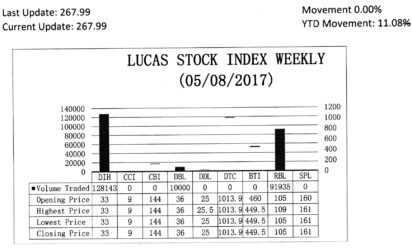 Equitable
Equitable
According to remarks made by a high official of the health services, in examining the attributes of an effective health care system, Guyana appears to be far from having a good health care system. A good healthcare system is thought of as one that provides safe, timely, efficient service to persons seeking care. It is also thought of as one that is equitable and patient-centred. For some time now, but certainly within the past few weeks, Guyanese have seen the health sector presented in the headlines generally in a negative light. It is the sort of pounding that would wear anyone down, even the most determined and dedicated healthcare professional. Some of these problems are not all about delivery of care. They are also about administrative procedures, internal controls and environmental conditions which are reflected in a distorted procurement system, long wait times, periodic flooding and troubling odours at some of the public institutions. It is not surprising therefore that people tend to believe that Guyana’s healthcare system is not improving despite the changes that are being introduced. However, if people looked at the matter objectively, they might think of the situation differently. This article seeks to present the writer’s own assessment of the situation.
Impact of the service
As one proceeds with the discussion, it should be kept in mind that healthcare in Guyana is delivered through two media, the public sector and the private sector. The public sector consists of the network of hospitals, clinics and other outpatient centres and services that are funded from money obtained through the public Treasury. The private sector consists of those healthcare institutions where patient care is funded through payments coming directly from the beneficiaries of the care or through private insurance companies on behalf of the beneficiaries. About two-thirds of the money spent on the healthcare system in Guyana comes from the public sector. It is the taxpayers who fund the bulk of the services that go to those persons who rely on the public healthcare system. In this discussion, it is the public health system that really matters. Much of the discussion in this paper will be centred on the impact of the service coming from facilities like the public hospitals. Before looking at the favourable and unfavourable aspects of healthcare in Guyana, a general observation is necessary.
The largest of Guyana’s health delivery system is found in Georgetown. Pivotal to this system is the Georgetown Public Hospital Corporation (GPHC). It is the largest and oldest healthcare facility in the country and any outcome from that institution matters. For any public health institution, patient care is the principal concern and so it is with GPHC. Anyone who presents himself or herself at the GPHC expects to be served properly, even when all hopes of success have already gone. The responsibility for the condition of a patient is attributed often to the last institution that touches the patient, even if the patient spent all his or her time and money elsewhere.
Patient care

The Lucas Stock Index (LSI) remained unchanged during the second period of trading in May 2017. The stocks of three companies were traded with 230,078 shares changing hands. There were no Climbers or Tumblers. The shares of Banks DIH (DIH), Demerara Bank Limited (DBL) and Republic Bank Limited (RBL) remained unchanged on the sale of 128,143; 10,000 and 91,935 shares respectively.
Patient care is delivered through a service which consists of a network of actions that has many sources. Very often attention is focused on what the doctor or nurse did or did not do, but patient care does not always rely on one person or one category of persons. Successful delivery of the service requires that every patient gets the same quality of service. This means that every part of the network has got to perform at the same desired level each time. The network consists of the activities that receive patients, that assess patients, that prepare them for attention by a doctor or other professional, that carry out the doctor’s orders and those that manage the patient until he or she leaves the institution. Naturally, not all services need the same types of intervention, but they need the same protocol to be applied at all times. The network of activities must be applied with the same attention to detail irrespective of whether the person is an inpatient or outpatient of an institution.
It is not an easy thing to do, especially when one relies on people to get the work done. It can be very stressful asking someone to operate at the same level of efficiency for eight hours each day. People are not machines and are likely to make mistakes. Even machines produce defective products that cause production facilities to employ quality control measures. It is not that easy with healthcare. With three shifts, some variability was bound to enter the health delivery system. One must therefore wonder about the quality control system of the public health system in Guyana given the many problems that have been associated with it.
In vain
The foregoing comment indicates that while doctors and nurses are pivotal to successful patient care, their work could go in vain if the support services are not in place. Clean beds, clean equipment, and clean surroundings are just as important to total patient care as accurate diagnosis and timely availability of drugs to treat a patient. What happens when a patient is entering the institution is just as important as what happens when the patient is in the facility and when the patient is leaving the facility. They represent three stages of service that are equally important to the successful treatment of patients. The porter, the nurse aide, the nurses, the doctors, the allied health providers and the pharmacy must recognize the need to work together on each case if their intervention is necessary. It is only with an intervention that is complete that the healthcare system will gain the confidence of people. It is necessary to pay attention to how the quality of healthcare is measured. It is not enough to rely on the traditional measures of doctor to patient or nurse to patient ratios. One must see if the system is properly organized; if problems are being identified early and if the response to problems is timely. In other words, a healthcare system needs constant due diligence. It is that lack of constant due diligence that has resulted in the increase in concern about the maternal mortality ratio. It is the absence of that attention to detail that causes many to worry about the dependability of the system.
With free access to services and drugs at the public facilities and with strategic measures being put in place to achieve universal primary health care by 2020, all might not be lost. There is a variety of services that the public health system provides. It provides vaccination for preventive and curative purposes. Shortly after children are born, they are vaccinated against certain diseases such as diphtheria, pertussis and tetanus (DPT). With the progression of time, they are also vaccinated against mumps, measles and rubella (MMR). These actions might not seem like much, but they influence the mortality rate of children and play an important part in determining the life expectancy of a Guyanese. Guyana’s infant mortality rate (IMR) declined by 0.5 per cent during the period 2011 to 2013. During the same period, the under-5 mortality rate (U-5MR) declined by 0.6 per cent. At the same time, life expectancy at birth has risen from 65.2 in 2011 to 66.2 in 2015.
Routine availability
The routine availability of the vaccination services shortly after birth might make people think little of the positive impact of the healthcare system. But the contribution to the nation’s development goes beyond saving lives from easily preventable causes. The health system has demonstrated that it is capable also of controlling the periodic eruption of non-communicable diseases like malaria, Zika and Chikungunya. It is trying to make heart disease less fatal. It has been reported that the mortality rate caused by NCDs has declined by 35.5 per cent over the period 2010-15. There have therefore been notable improvements in the public health system of the country. In addition to these improvements, there has been progress in the overall capability of the healthcare system according to available statistics. The number of physicians per 10,000 persons increased by 6.2 per cent from the first half of 2015 to the first half of 2016. The number of nurses per 10,000 of the population increased from 31.4 to 31.8 per cent in the first half of 2016, as more doctors, nurses and health officials were added to the public healthcare sector. A number of specialist doctors were also deployed to the remote hinterland areas. In addition, initiatives towards capacity building through the training of health workers were conducted through collaborative efforts to better equip our health care professionals.
However, despite these improvements, a number of challenges still exist. The organization faces overcrowding and work overload as a result of excess referrals and a lack of adequate staff. The system is missing the many specialty nurses and doctors that it needs. It lacks adequate equipment maintenance. These problems are however not limited solely to the GPHC, but to all public health care facilities. The matter of drug shortages, drug procurement shortfalls which seems to be receiving a considerable amount of attention lately, has seen few improvements.
Much more work
Clearly, much more work still has to be done to improve the health care services received by Guyanese. The first step starts with recognizing that the problem is broader than medical intervention. It must include customer service coming from all parts of the delivery system. Until such time, the problems will continue. It is my view that with new leadership in place the desired progress will occur.








